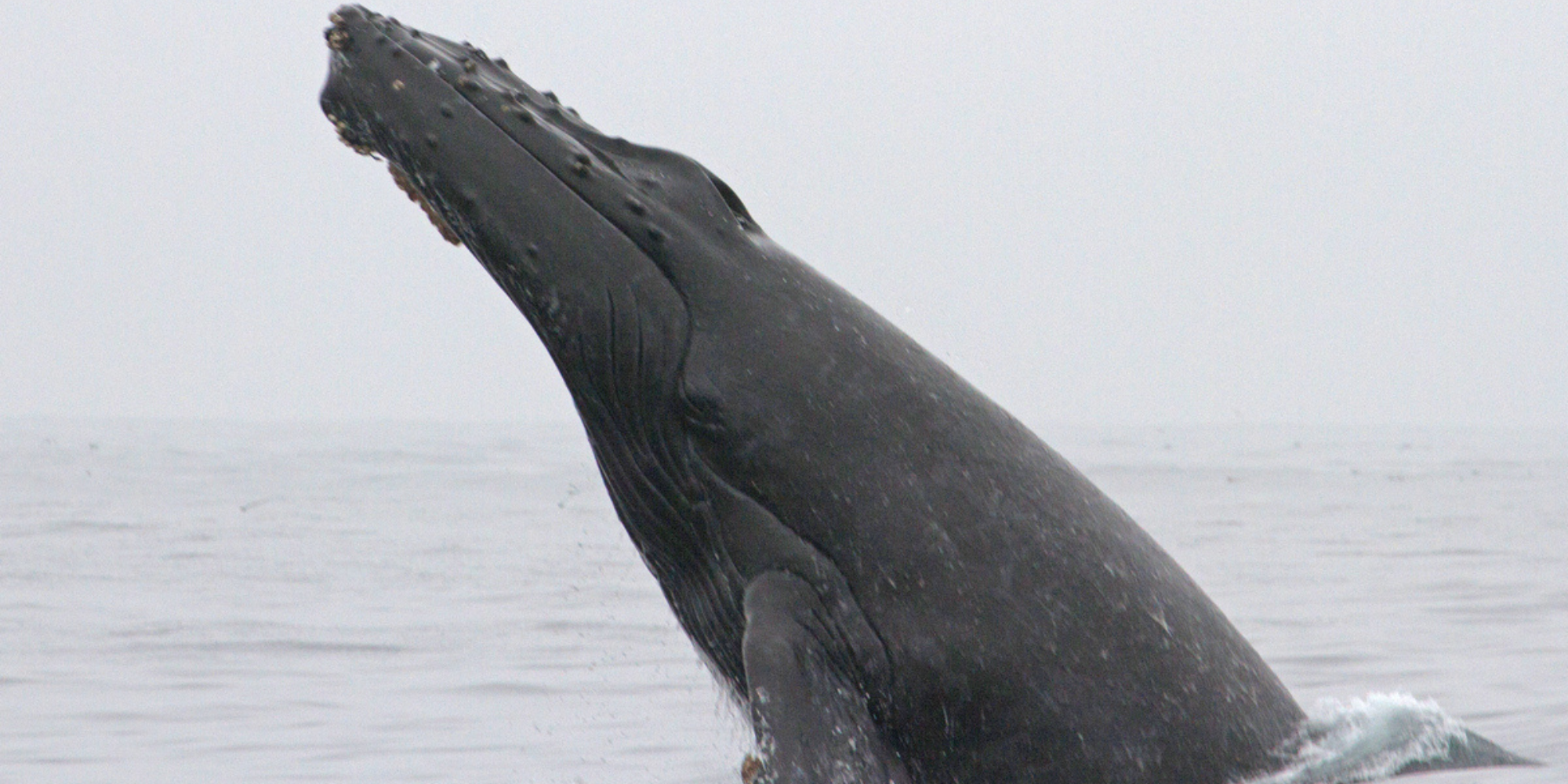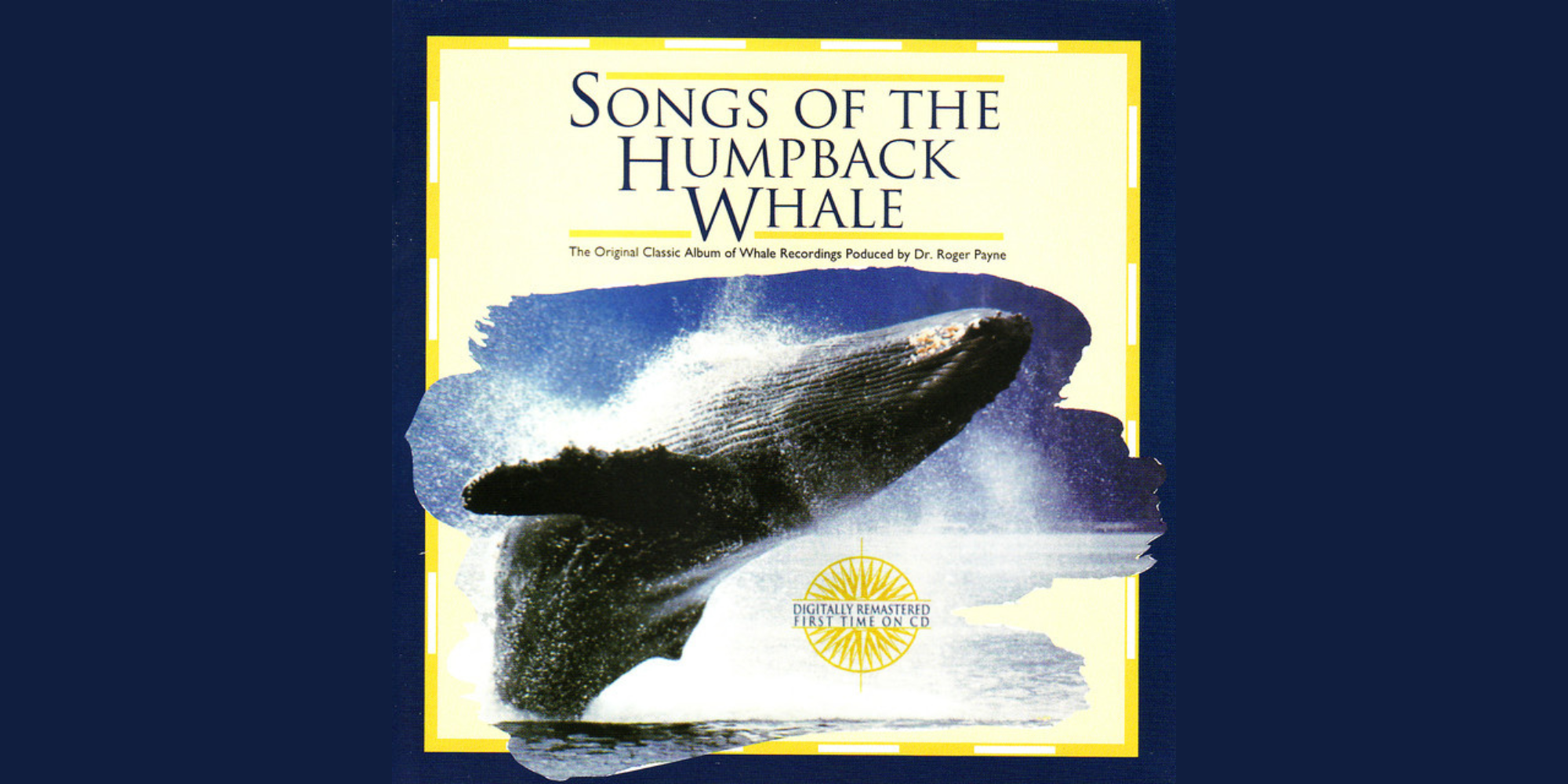“Either we continue to imagine and project onto them all sorts of things about the inner worlds and communication of whales and other species, or we make the effort to find out what is really there. This is critically important because the capacity for language is one of the last absolute bastions of human uniqueness, one of the few feats we believe only humans are capable of. […] Whales are the lynchpin of our ecosystem. […] [and] our human uniqueness has already cost us dearly.” Tom Mustill, How to Speak Whale: A Voyage into the Future of Animal Communication.
In September 2015, Tom Mustill and his friend Charlotte experienced something extraordinary while kayaking in California’s Monterey Bay, one of the most popular spots for whale watching.
As the two were turning back to shore, a large humpback whale suddenly appeared right next to them and crashed into their kayak – a scene that was filmed and photographed by several people and can still be found on the Internet today.
The “prime suspect,” as Mustill later dubbed it, or CRC-12564 on Ted Cheeseman’s Happywhale Project website, narrowly missed them but scraped the kayak as it fell, trapping Mustill and his friend under the water.
Miraculously, both survived without major physical injury. A befriended professor of Mustill’s, Joy Reidenberg, later surmised that the whale had deviated from its original leaping path, perhaps to avoid hitting the pair directly.
Nevertheless, that day was a life-changing event for Mustill and one of the main reasons for his book, How to Speak Whale: A Voyage into the Future of Animal Communication.

“Prime Suspect” as pictured on the Happywhale Project website. Photo credit: Kate Spencer
In the book, Mustill takes us through years of knowledge gaining about whales and dolphins since the 2015 incident, meeting research legends like Dr. Roger Payne (and many, many, many more amazing people), who was one of the first to research the songs of humpback whales and made them available to the public in the 1970s.
His campaign to protect and conserve humpback whales through their extraordinary songs sparked worldwide conservation movements and put pressure on governments, including the U.S., which passed the Marine Mammal Protection Act in 1972.
Whale songs also became part of the content of the 1971 Voyager spacecraft, which were designed, among other things, to carry messages or expressions of life from Earth into space.
Payne and his colleague Scott McVay analysed the songs of humpback whales and concluded that they were not just single notes, but that certain sequences of notes were repeated, forming entire themes.

In addition to Dr. Payne, Mustill also interviewed Joy Reidenberg, whom he joined in dissecting stranded whales and, together with her colleague Patrick Hof, she analyses cetacean brains at Mount Sinai Hospital in order to draw at least partial conclusions about their cognitive abilities.
In this context, Mustill also addresses the difficulties in the discussion about “cognitive intelligence” and thus also about “language”. He reports on the research of Dr. Diana Reiss with dolphins and their ability to form “combined noises” from different whistling sounds when they want more than one toy (in the example, ring and ball, i.e. ring-ball), or on their self-perception in the mirror experiment (“Mark or Mirror Self Recognition (MSR) Test”).
Mustill also talks about the controversial research of Dr. John Lilly and the resulting caution of today’s scientists to draw hasty conclusions, e.g. about linguistic abilities. However, he makes it clear that interspecies communication with humans has probably occurred from time to time, and that these events have not only been handed down several generations.
As the book progresses, it becomes clear how complicated the relationship between humans and new knowledge about the abilities of other creatures on this planet is as well as the complexity resulting due to our own perceived uniqueness.
Finally, Mustill takes us to the latest research in biology (e.g., the localisation of rare birds by their vocalisations at the Listening Observatory for Hawaiian Ecosystems (LOHE) made possible by AI-based software. He points to the current and massive projects, including the Earth Species Project, but also Project CETI.
Both are aimed at using the latest technological developments in large-scale AI language models to decipher the communication systems of different species on Earth.
While the Earth Species Project in Silicon Valley, led by Aza Raskin (also founder of the Center for Humane Technology) and Britt Selvitelle (formerly a member of Twitter’s founding team), focuses on multiple species, the academic Project CETI (including Google Research, Twitter, Microsoft, and the Universities of Berkeley, Haifa, Harvard, Oxford, Imperial College London and MIT) aims to fully decode the communications of sperm whales at the coast of Dominica in the Caribbean.
Mustill concludes by summarising the results of his search for whale “language”, the challenges of recent scientific work, and by wishing to remain open to the findings that will emerge in this field in the medium term. He also wishes for his daughter Stella that we preserve the whales and dolphins of our planet so that one day she too will be able to see them on the horizon.
I can only echo Rebecca Coffey in her review on the book: “It’s […] a first-class nature film put on paper.”
And why is this book so important to us, the WeWhale team? Quite simply! We want to do everything we can to protect and preserve our whales and dolphins. That’s why we offer low-noise, zero-emission, respectful trips to see the cetaceans and raise awareness about their existence and the need to protect them.
Like Tom Mustill, we are passionate about these amazing, intelligent creatures of our oceans and the routes they take each year to be observed. Research in this area is therefore essential!
In the future, we can well imagine supporting research projects such as ESP or Project CETI with our growing reach. Our quiet boats allow us to make sound recordings on our trips, which we can make available for analysis.



